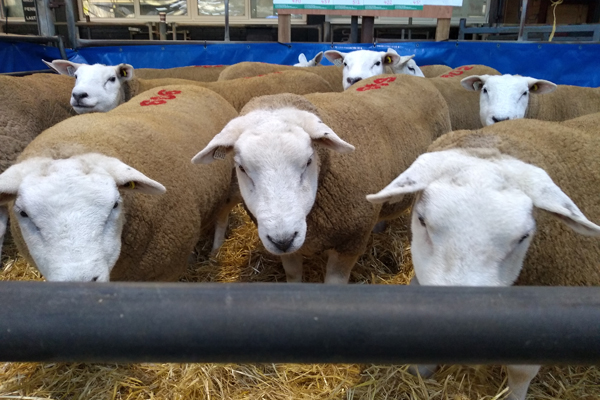HiHealth Flockcare
Launched in 2015, HiHealth Flockcare sheep health scheme offers sheep farmers and their vet access to specialist veterinary advice on testing and laboratory fees at a discount.

What does HiHealth Flockcare offer?
We offer a range of testing for sheep both to monitor at the flock and group level and to investigate in case of clinical disease.
Tests available to HiHealth Flockcare members and non-members include:
- Parasitology - to assess worm and fluke burdens and assess efficacy of treatment with anthelmintics/flukicides
- Biochemistry - with profiles to address specific issues such as trace element status, pre-lambing nutritional status and diagnosis of metabolic disease in the peri-parturient period, and a range of tests that can make up tailored profiles to assess other problems such as thin ewes, stiff lambs
- Serological / PCR testing - for important infectious diseases including Border Disease Virus, Maedi Visna, Liver Fluke and Johne’s disease.
Price information for all testing can be found here on our prices page.
This video, produced by Blobina Animations, was developed as part of a collaborative project involving the Moredun Research Institute to help educate farmers how to avoid the spread of sheep scab through effective testing. We are pleased to offer a sheep scab ELISA blood test which was developed at the Moredun Research Institute. This test can be used for the diagnosis of sheep scab infestation and to monitor flock status to aid scab control programmes.
HiHealth Flockcare Testing Packages
This package includes serology testing for Maedi Visna, Johne’s disease and Caseous Lymphadenitis (CLA) together with parasitology testing for worms and fluke. The package is designed to investigate the more common infectious causes of chronic ill thrift in adult sheep. The package includes testing of individual blood samples from 10 thin ewes and 10 dung samples from the same group of sheep which will be pooled at the lab for composite worm egg count and liver fluke / rumen fluke egg examination. Please phone for advice on how best to use this package and whether it is the best option for your flock. A detailed history can often provide clues as to what the problem may be and more targeted, and possibly cheaper, testing may be appropriate.
Annual testing of 10 thin cull ewes is also a starting point in assessing the disease status of your flock. Testing higher numbers would be advantageous in large flocks, but this must be balanced against cost. Although accreditation schemes are available for some sheep diseases, they may not be applicable to all flocks, and this is one low-cost way of gathering evidence to promote the health status of your flock as actively monitoring for the so-called ‘iceberg’ diseases of sheep.
This Package includes Sheep Scab ELISA, Maedi Visna ELISA , CLA ELISA, Border disease PCR and Johne’s disease PCR . Screening for disease in purchased stock, by veterinary examination and laboratory testing, before they join the flock means you can avoid introducing diseases. The parasitology testing element may be best used to check the efficacy of treatments given during quarantine to ensure resistant parasites are not brought into your flock. Timing of testing will depend on what treatments are used but if standard SCOPS advice is followed then 14 days post-treatment will suffice for both worms and fluke using the tests described.
This profile includes albumin, urea and betahydroxybutyrate (BHB) and is intended for monitoring energy and protein status in healthy groups of ewes in the period before lambing. The profile is available where 6 or more ewes are sampled. Veterinary interpretation will be included on all reports with further advice available by telephone.
The profile will most usefully be employed around 4 weeks before lambing when there is still time to make changes to the feeding regime based on laboratory results. It may be useful before this time, at 6 to 8 weeks pre-lambing, for example in groups of triplet bearing ewes or flocks that have had issues with pregnancy toxaemia, poor milk production and increased perinatal lamb mortality in previous years. In this case, even if all values are normal, it may be advisable to repeat closer to lambing dates to monitor progress.
Sampling of 6 twin bearing ewes and 6 triplet bearing ewes will give a good indication of adequacy of the ration fed. Serum samples should be taken either before concentrate feeding or 4 hours after to avoid short term elevations in urea that could be misleading. Information on scanning data, expected lambing date, body condition score and current feeding regime (forage and quantity of concentrates fed) will help with interpretation of results and allow better advice to be provided. It is generally not worthwhile sampling single bearing ewes. If there are ‘problem’ ewes, whether they are thin, lame or sick in any other way, these should not be included as the profile is a tool for monitoring the flock situation. It is nevertheless worthwhile collecting serum and heparinised blood samples from such ewes as they may warrant other laboratory investigation to determine the cause of ill health.